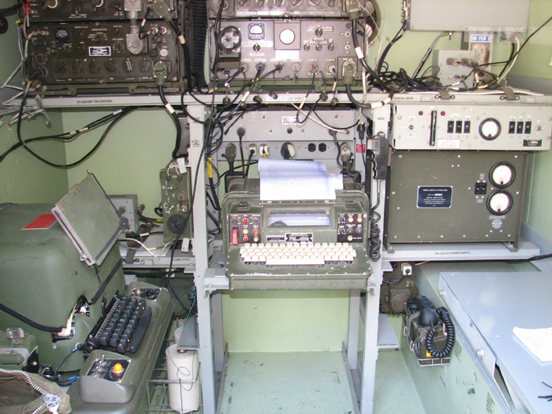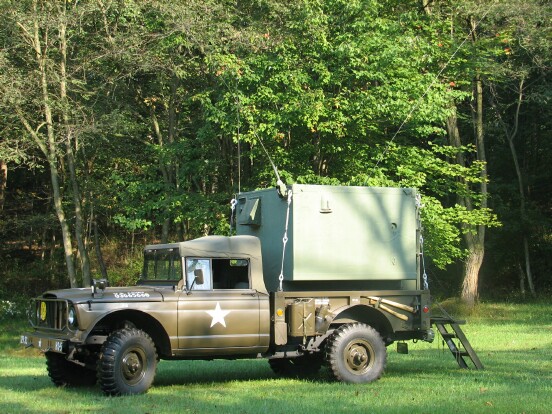
Picture is of my M-715 and AN/GRC-142A/D
The AN/GRC-122 & AN/GRC-142 Series
Some History
This series of RATT RIGS first appeared in Army Documents in 1965 but it appears they were only in development at this time. The NSN number field is even blank in these documents. Also, early pictures in the Signal Reference books look nothing like the final product. It is my opinion from both reference material and my time in the Signal Corps that they came into general use beginning about 1969.
These sets are medium-power, general use vehicular radio sets primarily for use in tactical radio teletype operations. The 122 partially replaced the AN/GRC-26(*) and the 142 replaced the AN/GRC-46(*). Because of the range of vehicles they were used with, two shelter types were produced. The S-318 first, mainly for the 3/4 ton trucks, and then the slightly larger S-250. They were mounted on the M-37, M-715, M880 and the M-561 series of vehicles, all with the 100 amp electrical system. They later appeared on the HUMVEE shelter carriers just prior to their obsolescence.
Talk about noise! You have the '106 amplifier blower, the heat exchanger blower, the power supply blower, the vent fan and now add the TT-98 an/or the TT-76 clacking away all in a small space! And, if it's winter, add the gas or electric heater and WOW, you're nearly deaf! Headphones were a must, just to maintain your sanity!
The Concept Model - Never Produced - Circa 1965
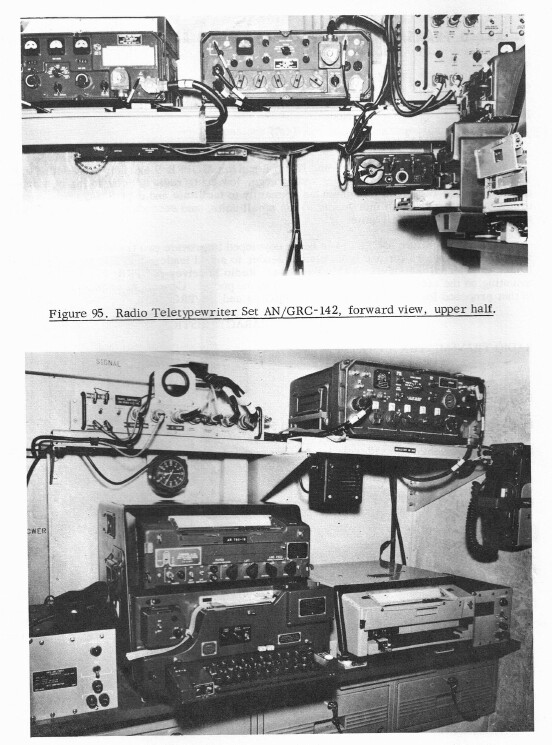
Production Models
In all there were 6 models of each series for a total of 12 variations. The only difference between the 122 and 142 of the same model is the 122 series has an additional RT and printer/terminal for duplex (dx) operation. The 142 series is wired for the duplex equipment so it could be installed at any time. In fact, the metal ID label on the shelters could be removed and "reversed" as on one side it said "122" and on the other side "142".
Model designations don't make sense chronologically. A "plain" model could have some of the latest equipment available and the "A" and "B" models have older items. The "C" and later are back to all the latest. Possibly the "plain" models were upgraded. You would also see "bastard" models in use as time passed. If for example an obsolete TT-98 teletype became unserviceable in an "A" model, it might be replaced with the newer solid state UGC-74 data terminal, as it mounted right up with its adapter plate, and plugged right in. Then, since the other equipment was different between the "A" and other models with the UGC-74 it could become an "A/D" but there never was an official change in the model. You will also see pictures in the photo gallery with two different shelters having the older TT-4 teletypes and power panels not existing in any documents. Were these TT-4's and power panels a field replacement, an MWO, or did only early models have them?
* In reference to the models, it has been recently reported that early 142 sets did indeed have the TT-4 page printers as well as a different power panel. We have been told these are noted in the early TM's which we have not seen.
Common Specifications
- Transportable by air or truck.
- Can be used in secure or non-secure operation.
- Accommodates security equipment.
- Can be used with up to 6 teletypewriters.
- Communication between the shelter and remote site via land lines.
- Can operate a "pony circuit" to other comm-centers.
- Radio equipment is the AN/GRC-106 with the RT-662 and later the RT-834.
- Modes are: AM, CW, USB or FSK at 85Hz or 850Hz shift. Can operate Diversity.
- Output Power is 400 watts, PEP.
- Frequency range is 2.0 to 29.999 MHz.
- One Way Reversible (owr) or Duplex (dx). Duplex in the 122 series only.
- Compatible with the 26 and 46 series.
Model Difference Summary
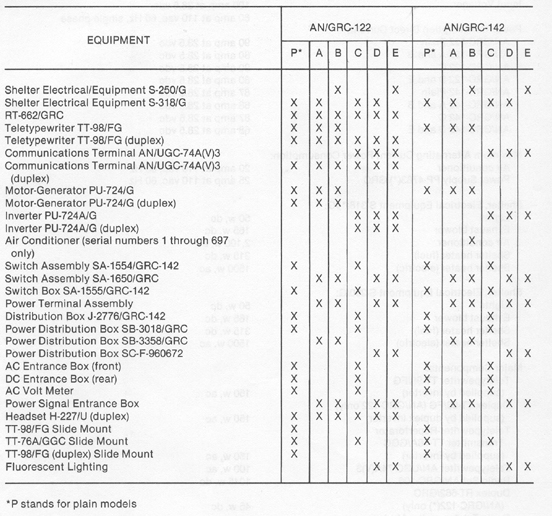
Equipment Layout By Model
The "Plain" and "C" Models

The "A" and "B" Models
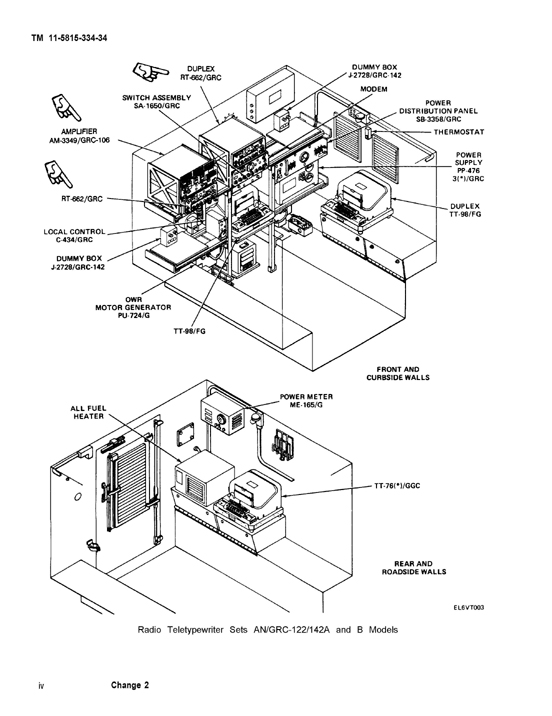
The "D" and "E" Models

An AN/GRC-122 "Plain or "C"
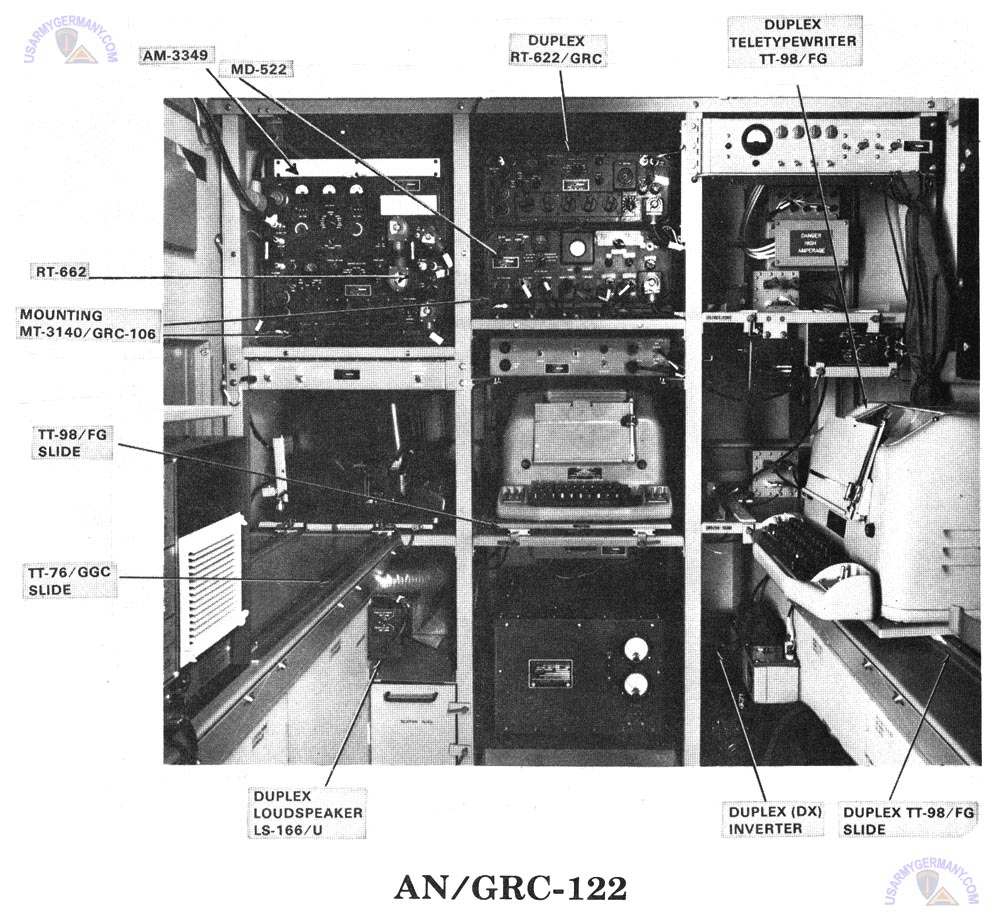
Interior of my AN/GRC-142A/D
